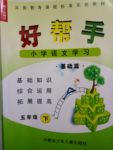题目内容
1.How to be politeBeing polite is a matter of good manners; it's about respect,and being considerate of people's feelings,culture,and values.It does not seem difficult,but for many people it remains a challenge.While some people have no interest whatsoever in manner,if you are reading this you're probably wondering how you can improve your manners.At the very least,you might want to know how to avoid being rude,which can put off the people around you.Being polite is also a good way to make friends.(61)F Loudness either indicates arrogance or insecurity.A charming polite person makes another person feel good.Keep this goal in mind.Be considerate of other people's needs and opinions.Don't make unfavorable remarks towards any kind of ethnic,political or religious groups under any circumstances.
(62)D You might want to practice this a bit so you don't squish (攥紧) people's hands,depending on how strong you are.That would make them feel uncomfortable.Beware especially when shaking hands of women who are wearing rings.Too much pressure can be very painful.Remember too that many people with an"old-school"etiquette background (especially if you are in Europe) find it inappropriate to offer your hand for a handshake to a lady or an older gentleman if you are a gentleman,or to an older lady,if you are a lady.
(63)E Try not to talk about yourself too much-if they want to know (or are polite) they'll ask.Be confident and charming.Do not hog the conversation,which is too rude.Look interested and listen to the answers.Don't look over the person's shoulder or around the room when they are talking,or let your eyes linger on the hot new guest who just walked in.That implies that you are distracted or not interested-that your conversational companion is not important or interesting enough to bother paying attention to.
(64)A Always be courteous (客气的),as you might meet this person again in another setting and wouldn't want to have caused negative memories that would give you a bad standing.If someone annoys or even insults you,don't get into an argument.Say"Let's agree to disagree"and change the subject,politely debate,or simply excuse yourself from the conversation.
(65)C For silverware,go from the outside in.Place your napkin on your lap,and do not add anything to the table that was not there when you got there (cell phone,glasses,jewelry).Put your purse between your feet,under your chair.Women should not apply makeup at the table.It is rude and demonstrates a lack of refinement.If you want to fix your makeup or check if something is in your teeth,go to the restroom.
A.Be nice.
B.Be aware that manners vary.
C.Know the proper dinner manners.
D.Shake hands firmly and look them in the eyes when doing so.
E.Start a conversation by asking questions about the other person.
F.Have a laugh which shows you are having fun,without being loud.
分析 本文讲述了如何才能拥有良好的礼仪,良好的礼仪也是结交朋友的方式之一.
解答 FDEAC
61 F 根据文章第二 段 Loudness either indicates arrogance or insecurity.可知大声表示傲慢或不安全感.因此在没有大声的情况下笑,表示你很高兴,故选F.
62 D 根据文章第三 段You might want to practice this a bit so you don't squish (攥紧) people's hands,depending on how strong you are. 可知握手时要根据你的体力,因此要紧紧的握手,故选D.
63 E 根据文章第四 段Try not to talk about yourself too much-if they want to know (or are polite) they'll ask. 可知不要试图聊关于太多自己的事情,因此应该开始一个和别人的话题,故选E.
64 A 根据文章第五 段Always be courteous (客气的),as you might meet this person again in another setting and wouldn't want to have caused negative memories 可知对待别人要客气,不要给别人留下不好的印象,因此一定要和善,故选A.
65 C 根据文章第六 段Place your napkin on your lap,and do not add anything to the table that was not there when you got there 可知在吃晚餐的时候要注意适当的餐桌礼仪,故选C.
点评 做七选五题目时要注意以下规则:1.放进去通顺,这一点是基础.凡不通顺的必错无疑;
2、选项中有单词、词组、句子成分或与所选答案所在段内容重合;
3、选项与其上句或下句之间有必然的逻辑关系;
4、选项全部内容都属于正确答案所在段.有时备选答案中可能含有甲乙两项内容,这时,只有当甲和乙都归属于本段时,答案才是正确的.

 新课标同步训练系列答案
新课标同步训练系列答案 一线名师口算应用题天天练一本全系列答案
一线名师口算应用题天天练一本全系列答案 小学学习好帮手系列答案
小学学习好帮手系列答案| A. | a; the | B. | /,the | C. | a;/ | D. | the,the |
| A. | witnessed | B. | was witnessed | C. | has witnessed | D. | had witnessed |
| A. | was promoting | B. | is promoting | C. | had promoted | D. | has promoted |
| A. | was talking | B. | talked | ||
| C. | had talked | D. | had been talking |
| A. | when | B. | where | C. | how | D. | why |